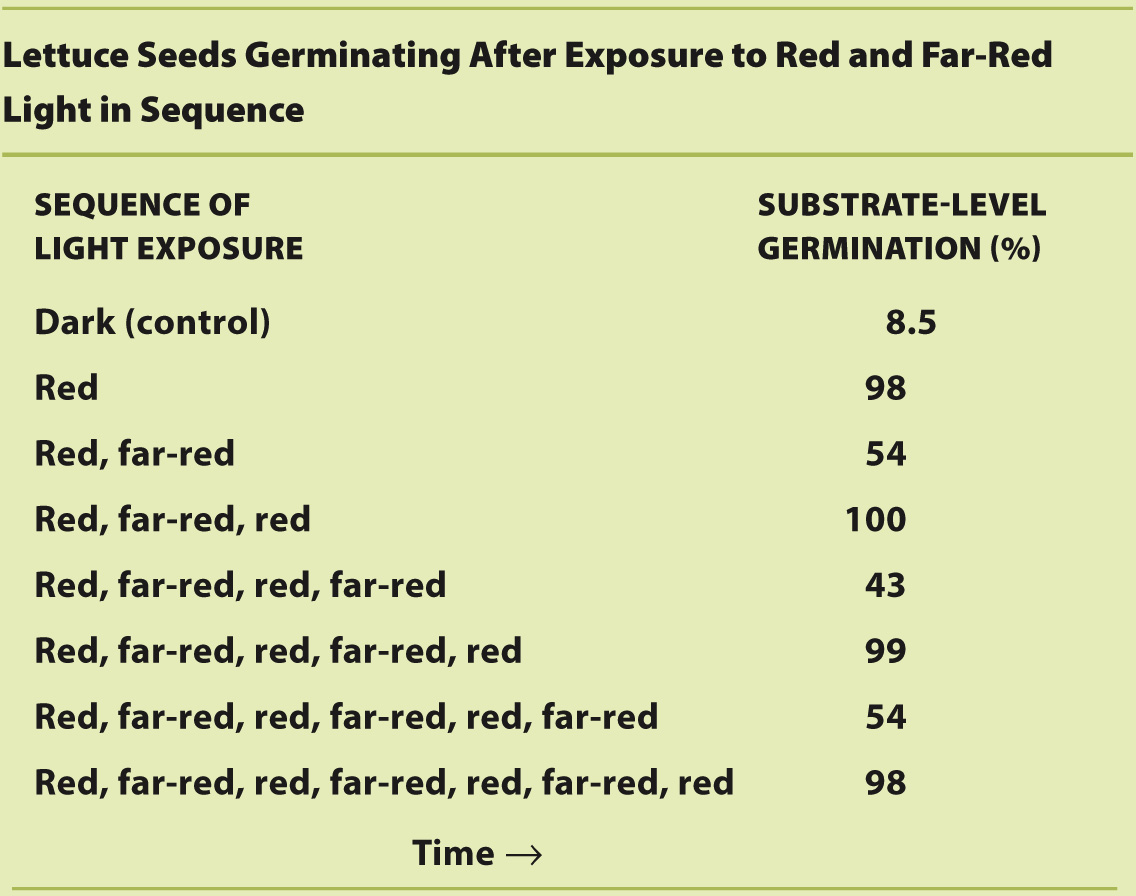HOW DO WE KNOW?
How do seeds detect the presence of plants growing overhead?
BACKGROUND To study the effect of light on seed germination, scientists exposed lettuce seeds that had been kept continually in the dark to different wavelengths of light and then counted what fraction of the seeds germinated. Red light had the greatest ability to stimulate germination, but surprisingly, far-red light inhibited germination such that fewer seeds germinated than in the control seeds, which were kept in darkness. In the rush to conduct more experiments, petri dishes with the light-treated seeds piled up by the sink until someone noticed that the seeds that had been experimentally treated with far-red light were now germinating.
HYPOTHESIS This observation suggested that the inhibitory effect of far-red light can be overcome by a subsequent exposure to red light.
EXPERIMENT The scientists exposed lettuce seeds to red and far-red light in an alternating pattern, ending with either red light or far-red light. They then placed the seeds in the dark for two days and afterward counted the number of seeds that had germinated.

FIG. 31.22
RESULTS When the lettuce seeds were exposed to red light last, nearly 100% of the seeds germinated. By contrast, when the last exposure of the seeds was to far-red light, the percentage of seeds that germinated was dramatically reduced.
CONCLUSION Seed germination in lettuce is triggered by exposure to red light and is inhibited by exposure to far-red light in a reversible fashion. As a result, plants are able to track changes in the relative amount of red and far-red light, which provides information on the presence or absence of plants overhead (see Fig. 30.23).
FOLLOW-UP WORK Additional studies showed that this result was due to a single pigment in a photoreceptor, now known as phytochrome, that is converted into an active form by red light and reversibly converted into an inactive form by far-red light.
SOURCE Borthwick, H. A., et al. 1952. “A Reversible Photoreaction Controlling Seed Germination.” Proceedings of the National Academy of Sciences 38: 662–666.
